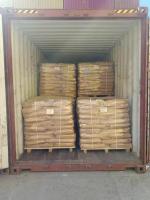what is the function of super absorbent polymer in mining ?
.jpg)
Superabsorbent polymers (SAPs) have found numerous applications in various industries, and mining is no exception. These highly absorbent materials are widely used in mining operations due to their ability to retain large amounts of water or other liquids. In this article, we will explore the main functions of superabsorbent polymers in mining, discussing their benefits, applications, and potential impacts on the industry.
1. Dust Control:
One of the primary functions of superabsorbent polymers in mining is dust control. Mining operations, especially those involving open-pit mines or underground tunnels, often generate significant amounts of dust. This dust can pose serious health hazards to workers, impact air quality in surrounding areas, and affect the overall productivity of the mine.
Superabsorbent polymers can be used to mitigate these issues by effectively binding dust particles together. When mixed with water, SAPs form a gel-like substance that can be applied to roads, stockpiles, or other dusty areas. The gel captures dust particles and prevents them from becoming airborne, reducing the risk of respiratory problems for workers and improving air quality in the vicinity of the mine.
2. Water Management:
Water management is a crucial aspect of mining operations. Mines require access to adequate water supplies for various processes, including ore processing, dust suppression, and equipment cooling. Superabsorbent polymers play a vital role in optimizing water usage and management in mining.
By absorbing and retaining water, SAPs can assist in water conservation efforts. They can be incorporated into water management systems to capture and store excess water, preventing its loss through evaporation or seepage. This stored water can then be reused for various purposes within the mine, reducing the reliance on external water sources and minimizing environmental impact.
Moreover, superabsorbent polymers can be utilized in tailings management. Tailings, the waste materials generated from ore processing, often contain water that needs to be separated for reuse or proper disposal. SAPs can aid in the dewatering process by absorbing the excess moisture from the tailings, facilitating faster separation and reducing the volume of water requiring treatment.
3. Erosion Control:
Mining activities can result in significant land disturbances, including the creation of open pits, slopes, and waste rock piles. These areas are prone to erosion, which can lead to soil degradation, sedimentation of water bodies, and habitat destruction. Superabsorbent polymers offer effective erosion control solutions in mining operations.
When mixed with soil or other substrates, SAPs can enhance their water retention capacity. This helps to stabilize the soil and prevent erosion by reducing the movement of water through the surface. By maintaining soil moisture levels and improving its structure, SAPs aid in the establishment of vegetation in rehabilitated areas, promoting ecological restoration and reducing the long-term environmental impacts of mining activities.
4. Safety and Stability:
Underground mining operations face unique challenges related to safety and stability. Tunnel collapse and ground subsidence are significant concerns, posing risks to workers' lives and causing disruptions to mining activities. Superabsorbent polymers can contribute to improving safety and stability in underground mines.
By absorbing water or other fluids, SAPs can reduce the permeability of surrounding rock formations. This enhanced impermeability helps to minimize water infiltration into tunnels, preventing weakening or collapse of the roof or walls. The improved stability provided by SAPs can enhance worker safety, reduce the need for costly rock support systems, and improve overall mining efficiency.
5. Reclamation and Land Rehabilitation:
Mining activities often leave behind disturbed landscapes that require reclamation and rehabilitation to restore their ecological functions. Superabsorbent polymers can assist in this process by improving soil quality and supporting vegetation growth.

